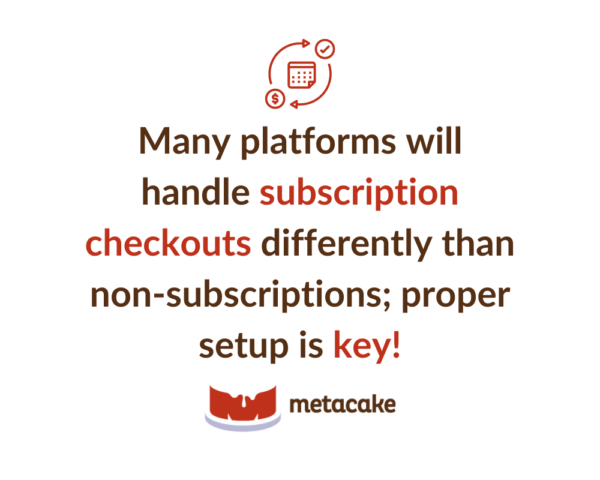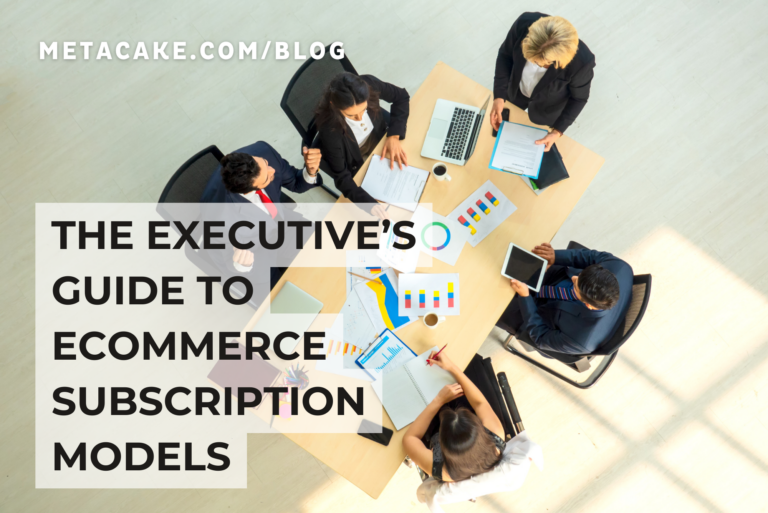If you run an ecommerce business, subscription models present an interesting opportunity. There’s an obvious benefit to the consumer — especially for products that require frequent re-ordering. And for the business, subscriptions provide monthly recurring revenue and can be a huge factor in increasing customer lifetime value.
Both of these are critical metrics for growth.
Subscriptions aren’t suitable for every ecommerce business, so do some digging to ensure your product fits the bill. If you find your product’s a good fit, it’s important to set it up strategically so you have the best chance for success.
As you consider this, remember that many ecommerce platforms don’t have native subscription ability, so you’ll need to use an outside app such as Recharge or Bold subscriptions. Once you have your tool secured, it’s time to think strategically about the best way to set up your ecommerce subscription model.
In this article, we’ll talk about the top areas to consider when your business is setting up a subscription model so it actually produces results rather than costing you time and money.

3 Elements of a Great Subscription Model
There are three main elements to consider when setting up your ecommerce subscription model:
1. Easy Integration: It should be easy to integrate (for the front and back end of your store).
2. Easy Management: It needs to be easy to manage (for customers and for the business).
3. Easy Use: It must be easy for the customer to see, understand, and make their selection.
Let’s walk through each of these elements in detail so you’re aware of what to keep in mind:
Integration
There are two sides to a subscription’s integration. One is how it looks to the customer on the front end (their selections on the product detail page). The other is how it works on the back end (payment, fulfillment, and other processes).
Both are very important, so here are a few tips:
- Make it clear and easy for the customer to select “subscription” or “one-time purchase” on the product detail page.
- Make subscription items and non-subscription (one-time) purchases harmonious at checkout. Many platforms will handle subscription checkouts differently than non-subscriptions; proper setup is key!
- Manage the separate experiences if more than one checkout is used. Shipping rate changes, customizations, discount codes, and other items will need to be handled on two checkouts.
- Make the subscription platform integrate with your customer service, email platform, fulfillment platform/team, etc.

Management
When setting up subscriptions, many business owners don’t think about what happens after the sale is complete. With subscriptions, the reality is that there will be ongoing management for both the customer and your team.
Here are a few tips to consider when it comes to managing your subscription program:
- Will there be a customer portal where customers can manage their subscriptions? You’ll need a way for the customer to log in to the site or access a “My Account” section. This sounds simple, but it’s not always easy for your team to execute or for the customer to use.
- Will you send an email or any notifications prior to monthly shipments? This is a best practice in case changes need to be made to their order or shipping date. This type of communication will require integration with an email platform like Klaviyo.
- Will there be a place for customers to manage payment info if it needs to be changed or if it expires? All subscription apps should have a way to do this, but the key is making sure your fulfillment team is in the loop and can make quick adjustments.
- Will there be communication if the subscription product runs low, goes out of stock, or becomes unavailable? You need to have a fulfillment plan in place before this happens.
Ease of Use
When it comes to ease of use for the customer, the key is making sure the customer isn’t bogged down by choices. Eliminating as many choices as possible for the customer is one of the key ways to improve your conversion rate.
Adding the option for a subscription means another choice for the customer. Here are a few tips to keep it easy:
- Make sure it’s clear how to subscribe vs. how to purchase one time (if both are an option).
- Make sure the benefit of subscribing is clearly stated so they feel motivated to subscribe (use language like “subscribe and save”).
- Make sure the buttons for each option are not too similar or easily confused (make them different colors). This can be a real issue if customers are moving fast.
- Make it easy for customers to learn how to manage their subscriptions. If you don’t, customer service will be bogged down with people needing help.
- Make sure the management of subscriptions and customer service is simple and (more importantly) doable on your team’s side.
Could Subscription Models Be a Major Opportunity for Your Ecommerce Business?
Growing customer lifetime value and monthly recurring revenue present major opportunities for ecommerce businesses. However, if your product isn’t a good fit, it can be a major distraction.
Take the time to think through your customers’ needs and buying behavior, as well as the logistics of putting this process in place.
As always, if you need an expert team’s guidance in ecommerce subscription models, Metacake is only a message away!
